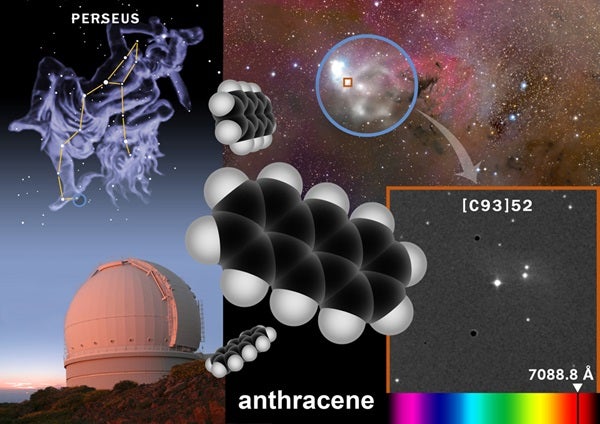A team of scientists from the Instituto Astrofisica de Canarias (IAC) and the University of Texas has succeeded in identifying one of the most complex organic molecules yet found in the material between the stars — the so-called interstellar medium. The discovery of anthracene could help resolve a decades-old astrophysical mystery concerning the production of organic molecules in space.
“We have detected the presence of anthracene molecules in a dense cloud in the direction of the star Cernis 52 in Perseus, about 700 light-years from the Sun,” said Susana Iglesias Groth from the IAC.
In her opinion, the next step is to investigate the presence of amino acids. Molecules like anthracene are prebiotic so, when they are subjected to ultraviolet radiation and combined with water and ammonia, they could produce amino acids and other compounds essential for the development of life.
“Two years ago,” said Iglesias, “we found proof of the existence of another organic molecule, naphthalene, in the same place, so everything indicates that we have discovered a star formation region rich in prebiotic chemistry.” Until now, anthracene had been detected only in meteorites and never in the interstellar medium. Oxidized forms of this molecule are common in living systems and are biochemically active. On our planet, oxidized anthracene is a basic component of aloe and has anti-inflammatory properties.
The new finding suggests that a good part of the key components in terrestrial prebiotic chemistry could be present in interstellar matter.
Since the 1980s, hundreds of bands found in the spectrum of the interstellar medium, known as diffuse spectroscopic bands, have been known to be associated with interstellar matter, but their origin has not been identified until now. This discovery indicates that they could result from molecular forms based on anthracene or naphthalene. Since they are widely distributed in interstellar space, they might have played a key role in the production of many of the organic molecules present at the time of the formation of the solar system.










